Open Journal of Analytical and Bioanalytical Chemistry
Development and Validation of Stability Indicating RP-HPLC Method for Simultaneous Estimation of Ibuprofen and Carisoprodol in Pharmaceutical Formulation
A Lakshmana Rao* and P Vijetha
Cite this as
Lakshmana Rao A, Vijetha P (2019) Development and Validation of Stability Indicating RP-HPLC Method for Simultaneous Estimation of Ibuprofen and Carisoprodol in Pharmaceutical Formulation. Open J Anal Bioanal Chem 3(1): 072-075. DOI: 10.17352/ojabc.000014A novel, rapid, precise and accurate stability indicating RP-HPLC method was developed and validated for the simultaneous estimation of Ibuprofen and Carisoprodol in combined pharmaceutical formulation. Chromatographic separation was achieved on Kromasil C18 column (250×4.6mm, 5μm) with UV detection at 260nm. The mobile phase consisting of 0.1% Ortho Phosphoric Acid (OPA) and acetonitrile in a ratio of 40:60v/v and adjusted the flow of mobile phase to 1.0mL/min. The method was showing linear response in the concentration range over 100-600μg/mL for Ibuprofen and 43.75-262.5μg/mL for Carisoprodol. The peaks for Ibuprofen and Carisoprodol were detected 2.256 min and 3.141 min respectively. The mean percentage recoveries of Ibuprofen and Carisoprodol were found to be 99% and 99.18% respectively. The method was validated and was successfully employed for the routine quantitative analysis of pharmaceutical formulations containing Ibuprofen and Carisoprodol in combined tablet dosage form.
Introduction
Ibuprofen (Figure 1) is a nonsteroidal anti-inflammatory agent with analgesic and antipyretic properties [1]. Chemically it is 2-[4-(2-methylpropyl)phenyl]propanoic acid [2]. Ibuprofen is a non-selective inhibitor of cyclooxygenase, an enzyme invovled in prostaglandin synthesis via the arachidonic acid pathway [3].
Carisoprodol (Figure 2) is a centrally acting skeletal muscle relaxant [4]. Chemically it is 2-[(carbamoyloxy)methyl]-2-methylpentyl N-(propan-2-yl)carbamate [5]. It is used as an adjunct in the symptomatic treatment of musculoskeletal conditions associated with painful muscle spasm [6].
In literature review no analytical HPLC methods were reported for simultaneous estimation of Ibuprofen and Carisoprodol in combined pharmaceutical dosage form. Hence, the main objective of the present work describes a simple, rapid, precise and accurate stability indicating RP-HPLC method for the simultaneous estimation of Ibuprofen and Carisoprodol in combined pharmaceutical dosage form as per ICH guidelines [7,8].
Materials and Methods
Materials
Pure samples (API) of Ibuprofen and Carisoprodol were procured from Spectrum Pharma Research Solutions, Hyderabad, India. Combination of Ibuprofen and Carisoprodol tablets were obtained from local pharmacy store. Acetonitrile, ortho phosphoric acid and distilled water were obtained from Rankem Chemicals Ltd., Mumbai, India.
Instrumentation
The analysis of drugs was carried out on a Waters HPLC 2965 system on Kromasil C18 column (250×4.6mm, 5μm). The instrument is equipped with a 2695 pump with inbuilt degasser, 2996 PDA detector and auto injector with 20µL sample loop. A 20µL Hamilton syringe was used for injecting the samples. Data was analysed by using Waters Empower 2 software. A double-beam PG Instruments T60 UV-Visible spectrophotometer was used for measuring absorbance for Ibuprofen and Carisoprodol solutions.
Mobile phase
A mobile phase consisting of mixture of 0.1% OPA and acetonitrile in the ratio of 40:60, v/v was prepared.
Diluent
Acetonitrile and water in the ratio of 50:50, v/v was used as diluent.
Preparation of standard stock and working solutions
Accurately weighed and transferred 40mg of Ibuprofen and17.5mg of Carisoprodol into 10mL volumetric flasks. 3/4th of diluents was added and sonicated for 10 minutes. Flasks were made up with diluents and labeled as standard stock solution 1 and 2 (4000µg/mL Ibuprofen and 1750µg/mL of Carisoprodol). Transfer 1mL of each stock solution into a 10mL volumetric flask and diluent was added upto the mark(400µg/mL of Ibuprofen and 175µg/mL of Carisoprodol).
Preparation of sample stock and working solutions
Take 5 tablets and measure the weight of tablets. Pulverized the tablets into fine powder then the powder equivalent to weight 1 tablet was taken a 100mL volumetric flask. Then add 50mL of diluent and subjected for sonication for 25min, finally diluents was added upto the mark. The above solution was filtered through HPLC filter (4000µg/mL of Ibuprofen and 1750µg/mL of Carisoprodol). Further transfer 1mL of above filtered stock solution was into 10mL volumetric flask and diluents was added upto the mark (400µg/mL of Ibuprofen and 175µg/mL of Carisoprodol).
Results
Method development
Various trails were performed by using different mobile phases and based on peak parameters the chromatographic conditions (Table 1) were optimized and optimize chromatogram was shown in Figure 3.
Method validation
System suitability parameters: The system suitability parameter was performed by injecting standard solutions of Ibuprofen (400µg/mL) and Carisoprodol (175µg/mL) into the system for six times and the parameters like USP plate count, tailing factor and resolution were determined. The values for this parameter satisfy the acceptance criteria as per ICH guidelines.
Specificity: Specificity is the parameter used to check the interference in the optimized method. By observing peaks it was found that there is no interference so, the method was said to be specific.
Linearity: Linearity solutions are prepared such that 0.25mL, 0.5mL, 0.75mL, 1mL, 1.25mL, 1.5mL from the stock solutions Ibuprofen and Carisoprodol are taken into 6 different volumetric flasks and diluted to 10 mL with diluents to get 100µg/mL, 200µg/mL, 300µg/mL, 400µg/mL, 500µg/mL, 600 µg/mL of Ibuprofen and 43.75µg/mL, 87.5µg/mL, 131.25µg/mL, 175µg/mL, 218.75µg/mL, 262.5µg/mL of Carisoprodol. Six linear concentrations of Ibuprofen (100-600µg/mL) and Carisoprodol (43.75-262.5µg/mL) are prepared and injected. The data was furnished in Table 2 and calibration curves were shown in Figures 4,5.
Precision: Precision of method was studied by performing intra-day and inter-day precision. Intra-day precision (Table 3) and inter-day precision (Table 4) was performed by injecting the 6 replicates of standard solution in a single day and six days. Calculate the % RSD and it should not be more than 2.0.
Accuracy: Accuracy was checked by adding known amount of Ibuprofen and Carisoprodol at 50%, 100% and 150% to a prequantified sample solution. Prepare the solutions (Tables 5,6) in triplicate form and calculate the mean percentage recovery at each level and the values should be in between 98%-102%.
Sensitivity: Limit of Detection (LOD) was calculated by standard deviation method. LOD for Ibuprofen and Carisoprodol were found to be 0.72 and 0.07µg/mL respectively. Limit of Quantitation (LOQ) was calculated by standard deviation method. LOQ for Ibuprofen and Carisoprodol were found to be 2.17 and 0.21µg/mL respectively.
Degradation studies
Acid degradation studies: Acid degradation was studied by adding mL of 2N hydrochloric acid to 1mL of stock solution of Ibuprofen and Carisoprodol and refluxed about half an hour at 600C. Then dilute the above solution in order to get 400µg/mL & 175µg/mL solutions and inject 10µL of solutions into HPLC instrument and determine the stability from the recorded chromatograms.
Alkali degradation studies: Alkali degradation was assesed by adding 1mL of 2N sodium hydroxide to 1mL of stock solution of Ibuprofen and Carisoprodol, and refluxed for half an hour at 600C. Then dilute the above solution in order to get 400µg/mL & 175µg/mL solutions and inject 10µL of solutions into HPLC instrument and determine the stability from the recorded chromatograms.
Oxidative degradation studies: Oxidative degradation was studied by adding 1mL of 20% hydrogen peroxide to 1mL of stock solution of Ibuprofen and Carisoprodol and the solutions were kept for half an hour at 600C. For HPLC study, the resultant solutions were diluted to obtain 400µg/mL & 175µg/mL solutions and inject 10µL of solutions into HPLC instrument and determine the stability from the recorded chromatograms.
Dry heat degradation studies: Dry heat degradation was assessed by keeping standard drug solutions in an oven at 105°C for 6hrs. For HPLC study, dilute the above solutions were in order to get 400µg/mL & 175µg/mL solutions and inject 10 µL of solutions into HPLC instrument and determine the stability from the recorded chromatograms.
Photo stability studies: The photochemical stability of the drugs was also studied by exposing the 4000µg/mL & 1750µg/mL solution to UV light by keeping the beaker in UV chamber for 7days or 200 Watt hours/m2 in photo stability chamber. For HPLC study, the resultant solutions was diluted to obtain 400µg/mL & 175µg/mL solutions and inject 10µL of solutions into HPLC instrument and determine the stability from the recorded chromatograms.
Neutral degradation studies: Stress testing under neutral conditions was studied by refluxing the drugs in water for 6 hrs at a temperature of 600C. For HPLC study, the resultant solutions was diluted to obtain 400µg/mL & 175µg/mL solutions and inject 10µL of solutions into HPLC instrument and determine the stability from the recorded chromatograms.
Degradation studies results of Ibuprofen and Carisoprodol were tabulated in Tables 7,8.
Discussion
A stability indicating RP-HPLC method was developed and validated for the simultaneous estimation of Ibuprofen and Carisoprodol by using mobile phase consisting of 0.1% ortho phosphoric acid and acetonitrile in the ratio of 40:60, v/v. The peaks of Ibuprofen and Carisoprodol were retained at 2.256 min and 3.141min respectively. The method was validated as per ICH guidelines. The theoretical plates for Ibuprofen and Carisoprodol were found to be 7099 and 2793 respectively, which indicates the efficient performance of the column. Linearity range was found to be 100-600μg/mL for Ibuprofen and 43.75-262.5μg/mL for Carisoprodol. The %RSD values for intra-day precision values of Ibuprofen and Carisoprodol were found to be 0.3 and 0.6 respectively. The %RSD values for inter-day precision values of Ibuprofen and Carisoprodol were found to be 0.2 and 0.7 respectively and hence the proposed method is precise. The mean percentage recoveries of Ibuprofen and Carisoprodol were found to be 99% and 99.18% respectively and the method is found to be accurate. Degradation studies were carried out in acid, alkali, oxidative, dry heat, UV light and neutral stressed conditions. The results revealed that both the drugs are stable in described conditions. Thus it is evident that the described method can be adopted for routine estimation of Ibuprofen and Carisoprodol in combined pharmaceutical formulation.
Conclusion
The present method was proposed for the simultaneous determination of Ibuprofen and Carisoprodol by using RP-HPLC in tablet dosage form is found to be simple, rapid, accurate and precise. Shorter retention times and run time indicates that the developed method was so rapid and economical which is an appropriate method for regular quality control tests in pharmaceutical industries.
- Bushra R, Aslam N (2010) An overview of clinical pharmacology of Ibuprofen. Oman Med J 25: 155-166. Link: http://bit.ly/32eDXtv
- Moore N (2003) Forty years of Ibuprofen use. Int J Clin Pract Suppl 135: 28-31. Link: http://bit.ly/33jmyBm
- Moore N, Noblet C, Breemeersch C (1996) Focus on the safety of Ibuprofen at the analgesic-antipyretic dose. Therapie 51: 458-463. Link: http://bit.ly/2WK8iyS
- Reeves RR, Burke RS (2010) Carisoprodol: abuse potential and withdrawal syndrome. Curr Drug Abuse Rev 3: 33-38. Link: http://bit.ly/2rgZ5mf
- Owens C, Pugmire B, Salness T, Culbertson V, Force R, et al. (2007) Abuse potential of Carisoprodol: a retrospective review of Idaho Medicaid pharmacy and medical claims data. Clin Ther 29: 2222-2225. Link: http://bit.ly/2pGURUk
- Littrell RA, Hayes LR, Stillner V (1993) Carisoprodol (Soma): a new and cautious perspective on an old agent. South Med J 86: 753-756. Link: http://bit.ly/34BakUH
- ICH (2005) ICH Q2(R1) Validation of Analytical Procedures: Text and Methodology.Link: http://bit.ly/33iXNFr
- ICH (2003) ICH Q1A (R2) Stability testing of new drug substances and drug products. Link: http://bit.ly/2JT9hYr

Article Alerts
Subscribe to our articles alerts and stay tuned.
 This work is licensed under a Creative Commons Attribution 4.0 International License.
This work is licensed under a Creative Commons Attribution 4.0 International License.
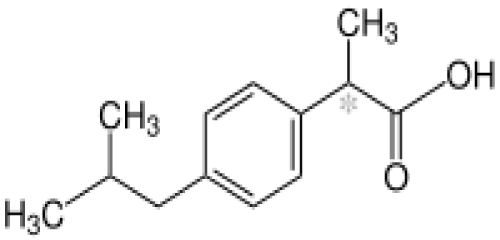
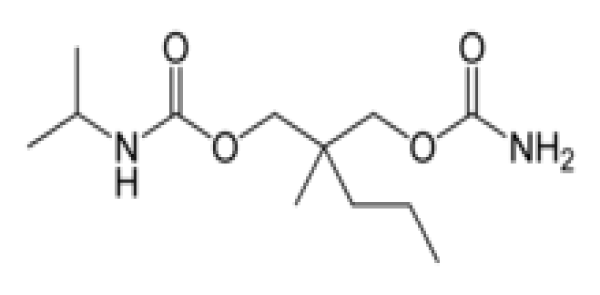
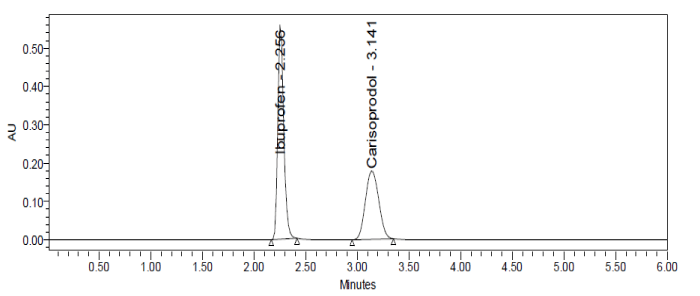
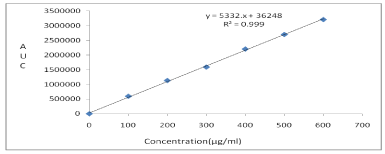
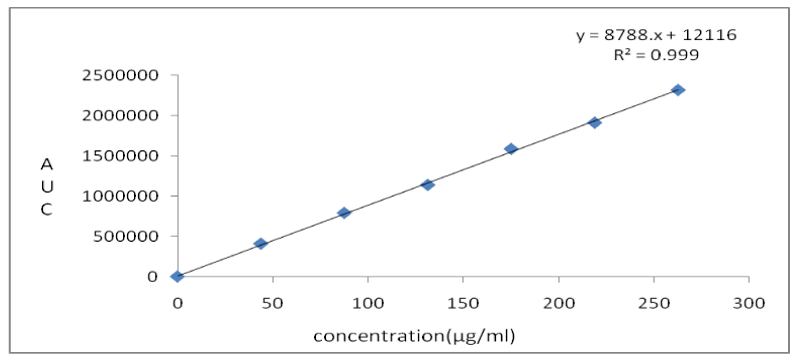
 Save to Mendeley
Save to Mendeley
